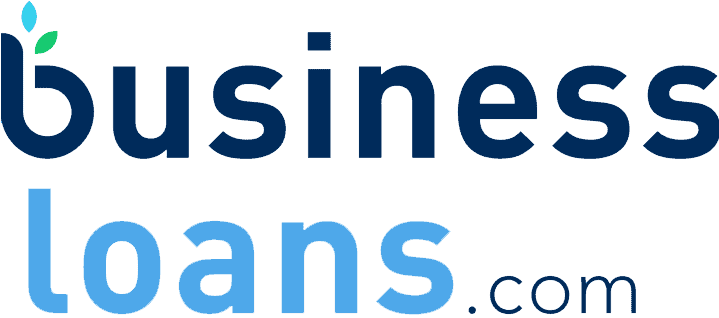When it comes to small business funding, are term loans or lines of credit a better fit for your small business? Find out with this guide.
Our content reflects the editorial opinions of our experts. While our site makes money through
referral partnerships, we only partner with companies that meet our standards for quality, as outlined in our independent
rating and scoring system.
If you need to fund your business, you might be researching different types of loan types and structures. So, it’s time to be familiar with the similarities and differences between two popular ways to finance your business: term loans vs. lines of credit.
Term Loans VS. Lines Of Credit: A Quick Glance
Disclosure: This video is sponsored by Lendefied and is included for informational purposes.
Here is a brief rundown of the differences between term loans and lines of credit, and situations where you might choose one over the other.
You might want a term loan if:
- You know exactly how much money you need for a particular expense
- You don’t already have access to credit and need money quickly
- You need a large lump sum of money
- You need a lot of time to pay off your loan
- You have a credit score of 700 or higher
- You have been in business for two years
You might want a line of credit if:
- You foresee having a lot of smaller expenses over a more extended period
- You want access to cash when you need it
- You want to have a financial cushion to fall back on if unexpected expenses arise
- You want a reusable source of funding
- You have a credit score of 650 or higher
- You have been in business for six months or a year
What Is A Term Loan?
Term loans or installment loans usually deliver funding in a single lump sum. Repayment begins once you’re approved and claim the cash, but it’s spread out over a set period of time — hence “term” loan. Interest is factored into your payment structure. Weekly payments owe weekly interest, and so on for monthly payments. The lender will set an interest rate based on the type of term loan, your business credit score, and your business’s fiscal health.
On average, interest rates on term loans come out to between 5% and 10%. Short-term loans tend to have rates that are less favorable than intermediate- and long-term loans, with the upshot being that the latter two are harder to qualify for.
Also note that the longer you draw out your loan, the more you’ll inevitably pay in interest. As you shop around, do your best to find the best balance between immediate access to funds and long-term expenses.
How quickly you’re approved for funding depends on what type of lender you’re applying through (whether it’s a credit union, a big bank, or the SBA makes a difference) as well as the time period for the loan. Online lenders tend to approve and hand out loans faster.
The Main Types Of Term Loans
| Type Of Term Loan |
Short-Term Loan |
Intermediate-Term Loan |
Long-Term Loan |
| Claimable funds |
At least $1,000 to $5,000, possible to qualify for tens or hundreds of thousands |
$500,000 to $750,00, possible to qualify for more |
Up to $3 to $6 million |
| Time for approval |
Could be as little as two to three days |
A week or less via non-traditional lenders; weeks or months through banks or the SBA |
A week or less via non-traditional lenders; weeks or months through banks or the SBA |
| Payment structure |
Six months to a year, sometimes 18 months |
One to five years |
Five years minimum, upwards to 20 or more |
| Interest owed |
Typically fixed-rate between 8% and 13% |
Between 6% and 30%, can be fixed or variable |
Varies based on payment structure |
When Is A Term Loan A Good Decision?
Term loans are ideal for established businesses that are attempting to expand, need to make a large purchase, or otherwise have a one-off expense of some kind.
Do note that you should take into consideration the long-term value of what you want to purchase with your loan. If you’re purchasing a piece of equipment or a vehicle that depreciates in value so quickly that it’s worth less than the debt you’ve accrued, you’ll likely want to opt for a short-term loan or a different source of funding altogether.
How Do I Qualify For A Term Loan?
Your best shot at a term loan is if you’ve been in business for at least two years and you have a business credit score of 700 or higher. But the type of loan you apply for also plays a part.
Short-term loans are easier to get than long-term loans since they typically provide less capital and fewer risks to the lender. Whether it’s a secured vs. unsecured loan will affect your chances as well.
Some lenders will still give you loans with bad credit, especially if you’re able to demonstrate that your business can responsibly handle payments.
Lenders usually expect businesses to earn anywhere from $100,000 to $250,000 in order to qualify. But again, this will depend on the type of term loan and the lender you’re seeking funds from. Talk with the lender to get familiar with their requirements.
What Is A Line Of Credit?
Instead of offering you a lump sum, a line of credit gives you access to an amount of money the lender qualifies you for. You can draw upon that credit at will, accumulating debt up to a maximum equal to your credit limit.
Interest rates on lines of credit range quite a bit, from as low as 4% to as high as 60%. The same is true for limits — some banks will extend millions in credit. Other lenders may only offer $250,000.
Where you apply for a line of credit plays a big part in the limit you qualify for and the interest you owe. Lenders will also take your credit score and your business’s fiscal health into consideration.
Similar to a business credit card, most lines of credit are revolving, meaning that your funds become available again as you pay off your debt. Some lenders offer rewards programs similar to those of credit cards as well.
The Main Types Of Lines Of Credit
| Type |
How It Works |
| Unsecured Line Of Credit |
An unsecured line of credit is simply one that isn’t secured by an asset. Although there is no formal collateral per se, you may be asked to sign a personal guarantee. |
| Asset-Backed Line Of Credit |
A line of credit that bases the amount of credit extended to you on an asset you provide as security. If the value of your asset changes, your credit limit may as well. |
| Invoice-Backed Line Of Credit |
An asset-backed line of credit that uses your invoices as security. Not to be confused with invoice factoring. |
| Home Equity Line Of Credit (HELOC) |
A line of credit that uses the equity you’ve built up in your home as security. HELOCs often last around 10 years and feature interest-only payments during that period. |
When Is A Line Of Credit A Good Decision?
Lines of credit are best for businesses looking to smooth out their cash flow or who want to have a reserve fund they can use to pay for unexpected expenses throughout the year.
Lines of credit generally have higher interest rates than comparable term loans, but they’re far more versatile. This may make a line of credit stand out if flexibility with your funds is a priority.
How Do I Qualify For A Line Of Credit?
You may be able to snag a line of credit if you have a credit score of 650 or higher and you’ve been in business for at least six months or a year. Qualifying with a lower credit score is a possibility if you can prove that your business has a strong annual income.
At the very least, be prepared to show that your business earns $120,000 a year at minimum. Ask the lender about their requirements.
Term Loan VS Line Of Credit: Key Differences
|
Term Loan |
Line Of Credit |
| Repayment Periods |
If you need a large chunk of money and a long time to pay it off, a term loan can grant you that flexibility. This doesn’t necessarily apply to short-term loans. |
You can have a bit of flexibility with a line of credit, too, depending on your limits and how much you want to withdraw. But be aware that the interest rates on lines of credit tend to be higher, so keeping yourself in debt will cost you more over time. |
| Ease To Acquire |
Alternative lenders have been growing in popularity and are more likely to approve businesses for loans. However, you may wind up with a higher interest rate or a term that’s shorter than what’s ideal for you. |
Lines of credit are a bit hard to get at the moment, but your chance at approval with a line of credit is likely better than with a term loan. |
| Rates |
Term loans usually have better rates. |
In most cases, you’ll pay a premium for the convenience a line of credit offers, whether in interest rates or fees. |
| Convenience |
Term loans require you to apply every time you need more cash. On top of that, you risk stacking loans if what you qualified for doesn’t cover your expenses. Short- and intermediate-term loans may also have balloon payments. |
Lines of credit can make day-to-day expenses easier to navigate since you can draw money whenever you need. And with a revolving line of credit, those funds replenish, sparing you from having to reapply. |
Is A Term Loan Or A Line Of Credit Right For Your Business?
Whether a term loan or a line of credit is best for your business heavily depends on the types and quantities of expenses you’re attempting to take on.
If you need a lump sum, are able to state the intended use, and can pay the money back over the next few years, a term loan might be best. Our small business loan reviews can help you find a lender that works for you.
If your financial needs are vaguer and your ability to repay quickly is more solid, a line of credit may be the way to go. In that case, we can help you find the best business lines of credit as well.
Best of luck!










